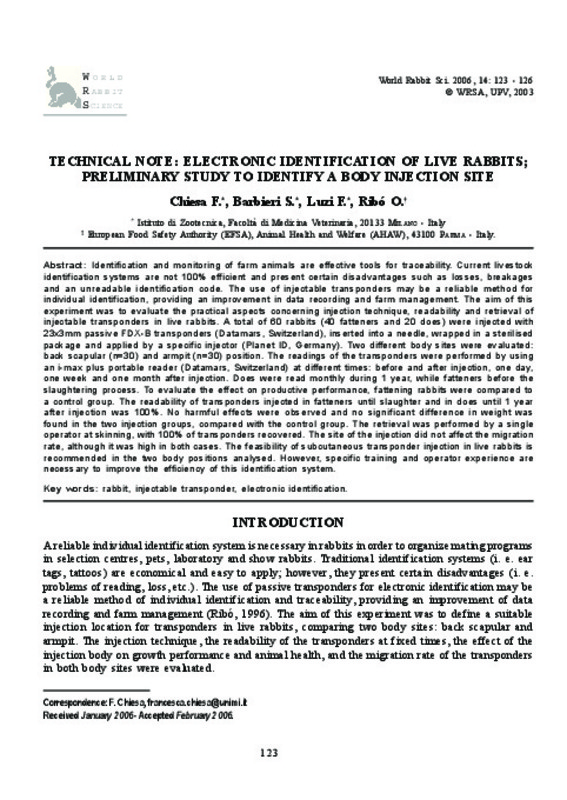JavaScript is disabled for your browser. Some features of this site may not work without it.
Buscar en RiuNet
Listar
Mi cuenta
Estadísticas
Ayuda RiuNet
Admin. UPV
Technical note: electronic identification of live rabbits ,preliminary study to identify a body injection site
Mostrar el registro completo del ítem
Chiesa, F.; Barbieri, S.; Luzi, F.; Ribó, O. (2006). Technical note: electronic identification of live rabbits ,preliminary study to identify a body injection site. World Rabbit Science. 14(2). https://doi.org/10.4995/wrs.2006.548
Por favor, use este identificador para citar o enlazar este ítem: http://hdl.handle.net/10251/9666
Ficheros en el ítem
Metadatos del ítem
| Título: | Technical note: electronic identification of live rabbits ,preliminary study to identify a body injection site | |
| Autor: | Chiesa, F. Barbieri, S. Luzi, F. Ribó, O. | |
| Fecha difusión: |
|
|
| Resumen: |
[EN] Identification and monitoring of farm animals are effective tools for traceability. Current livestock identification systems are not 100% efficient and present certain disadvantages such as losses, breakages and an ...[+]
|
|
| Palabras clave: |
|
|
| Derechos de uso: | Reserva de todos los derechos | |
| Fuente: |
|
|
| DOI: |
|
|
| Editorial: |
|
|
| Versión del editor: | https://doi.org/10.4995/wrs.2006.548 | |
| Agradecimientos: |
|
|
| Tipo: |
|








